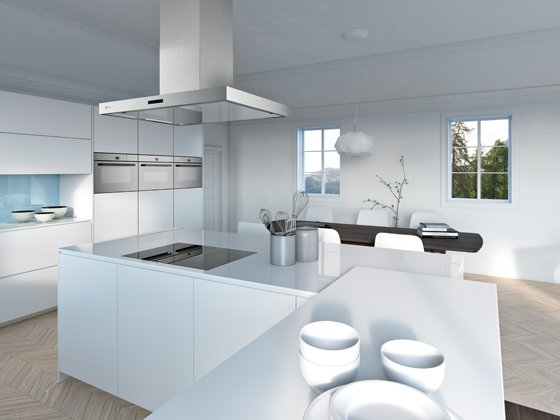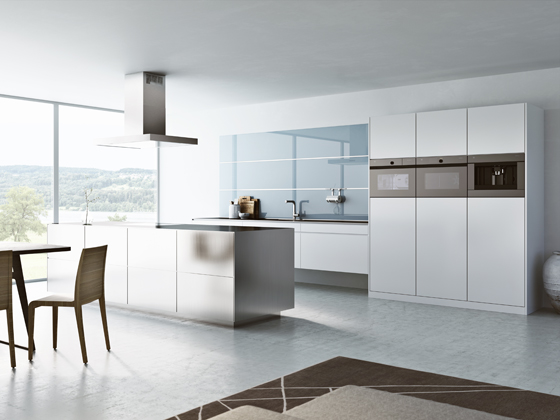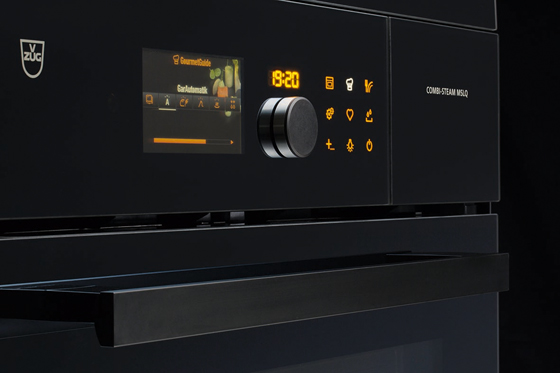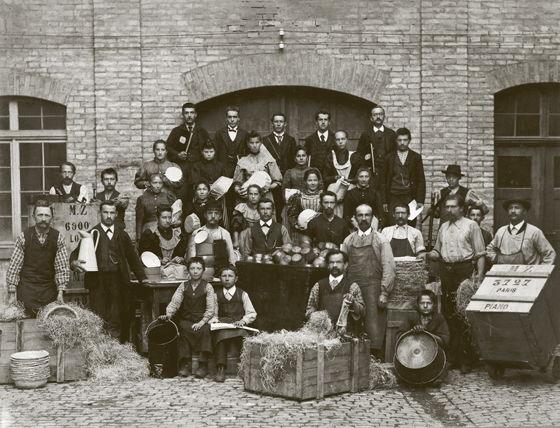Steamy Windows
Brand story by Ulrich Büttner
Zug, Switzerland
25.04.16
V-ZUG, the Swiss market leader in household appliances, has spent the last 100 years turning the marriage of precision, longevity and innovative technology with elegant forms and surfaces into a veritable artform. Swiss understatement at its best.
The mirror glass front of the new series with integrated display, central control button and the flush recessed handle, which unfolds on commissioning
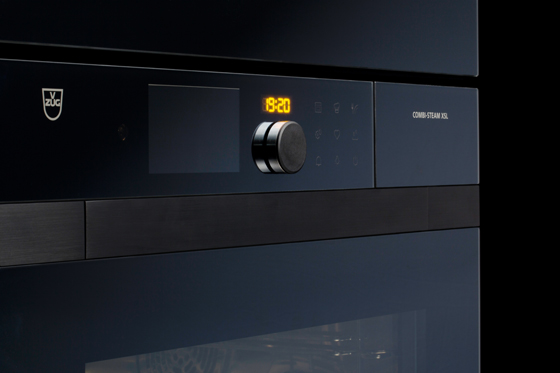
The mirror glass front of the new series with integrated display, central control button and the flush recessed handle, which unfolds on commissioning
×With its highly innovative products, especially for the kitchen, V-ZUG AG is the undisputed market leader in Switzerland. The flagship of its recent product development is the Combi-Steam MSLQ, an intelligent, unique oven that brings together the three common heating modes – conventional heat, steam, and microwave – in a single appliance. It forms a striking symbiosis of flawless technology and exclusive design.
The company, based in the city and canton of Zug, assumed its name in 1981. Five years prior to this, the metalware factory Metallwarenfabrik Zug had merged with the galvanising plant Verzinkerei Zug AG, which was founded in 1913. Looking to this year as its starting point, V-ZUG AG celebrated its “100th anniversary” in 2013. Thus, the name stands for over a century of progress and convenience, for automation and the facilitation of everyday housework, principally in Switzerland. Time and time again in the areas of washing and cooking, V-ZUG AG has introduced standard-setting developments to the market that demonstrate its commitment not only to quality, but also to sustainability and design concerns.
The Combi-Steam MSLQ, launched just over a year ago, is part of the manufacturer’s most modern product line. Visually, it is distinguished by a black glass front with retractable door handle and a full-colour graphic display with a central control knob. In February, the product won the coveted iF Gold Award 2016. With this affirmation in their pocket, the product development team at V-ZUG feels well-equipped to move into further markets. And that, in fact, is the plan.
The Swiss manufacturer's new series combines sleek design and excellent ease of use with sophisticated and reliable technology. The automatically unfolding handles are unique on the market
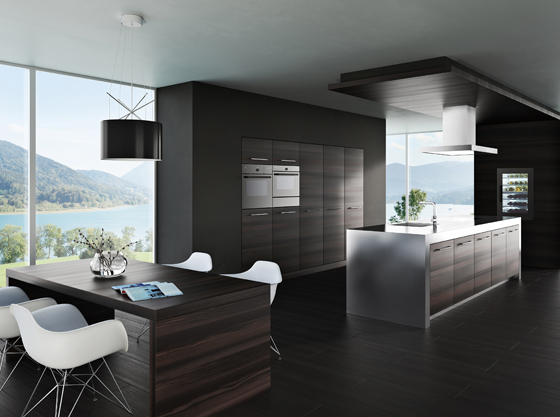
The Swiss manufacturer's new series combines sleek design and excellent ease of use with sophisticated and reliable technology. The automatically unfolding handles are unique on the market
×While Philipp Hofmann, Head of Global Marketing Services, is gratified by the company’s status as the Swiss market leader, he isn’t resting easy. Rather – since V-ZUG’s 100th birthday, if you will – he has been working to increase the company’s international profile and its share in various foreign markets. He explains: “We’re doing this in small steps, not in a sudden forward lurch. And we’re watching the market, of course. The idea to work out this handle detail so elegantly grew out of our market observation. In the premium kitchen segment, the trend of foregoing classic handles has been in progress for some time. Because no matter how you looked at it, household appliances didn’t offer any handle solutions that really satisfied the design approach of architects or discriminating kitchen manufacturers.”
The handle on an oven or steamer front is a central feature. The developers at V-ZUG are always concerned with both ergonomics and appearance. While it is important to shine in the kitchen planner’s showroom, one must ultimately convince the customer who puts the appliance to everyday use. The steamer or combi-steamer is built for an operating life of at least 15 years.
“If we simply made the handle as a recessed shell, it wouldn’t look good for long,” Hofmann says with certainty. “So we aimed to unite precisely these two worlds: as the first and perhaps only manufacturer to offer an immaculate appearance for a convincingly handle-free kitchen, and to guarantee the customer years of service from a handle that swings out, yet is absolutely, reliably sturdy.”
Front panel with deployed handle, which at the same time releases the oven's air slit for the warm exhaust air, making the conventional exhaust slot obsolete

Front panel with deployed handle, which at the same time releases the oven's air slit for the warm exhaust air, making the conventional exhaust slot obsolete
דBut the project was about more than that,” adds Roy Keller, Project Manager for Design. “We succeeded in making the exhaust air slit virtually invisible. If you imagine the appliance: between the faceplate and the door is the exhaust air slit; it’s about 8 millimetres wide, and, through it, the warm air from the baking process is blown back into the kitchen. That’s neither pretty nor easy to explain to customers, but it’s indispensable. With our hinged-handle solution, as soon as the oven is turned off and the handle swings back into its resting position, the slit disappears.”
The exhaust air is no longer truly hot, having been mixed with cool air that the appliance takes in around its perimeter, and which also protects the electronics from overheating. Keller draws attention to another special feature. “One of our high-priority goals was to not run electricity in the door,” he explains. “The handle is extended electronically from the door, it’s true, but the motor lies behind the control faceplate. Ensuring the smooth interaction of these two separately placed systems was difficult. Housing the mechanics in a door just 20 millimetres thick, while also converting a linear motion into a rotational motion, is very tricky. But,” Keller declares, not without pride, “the result is a complete decoupling of the electronics from the mechanics.”
None of this is apparent to the user. When he turns on the oven, a tappet descends from behind the faceplate into the door, activating the handle, which swings out and is then set in place by means of a knee lever mechanism. The tappet retracts again silently behind the faceplate, leaving the handle extended and locked. It is perhaps no wonder that designers and engineers worked meticulously at this solution for almost four years. The problem was anything but trivial.
The new product range of combi steamers, steamers and ovens received the iF gold award 2016, among others for their handle-less front design
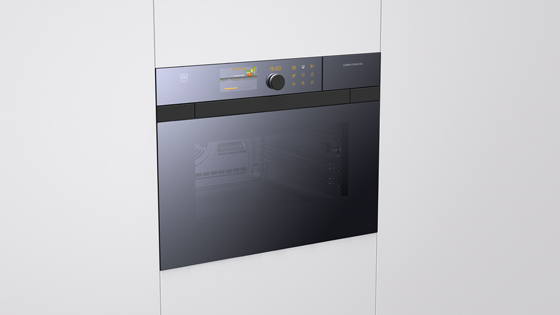
The new product range of combi steamers, steamers and ovens received the iF gold award 2016, among others for their handle-less front design
דSimple though the logic made it seem, the objective actually posed quite a challenge,” Philipp Hofmann recalls. “There was a lot more to it than combining beauty and durability. Even at baking temperatures of 230 to 250 degrees Celsius, the outflowing air is just a mild breeze, as Herr Keller indicated. In terms of heat management alone, designing ovens and steamers is generally very demanding given the regime of industry standards and regulations. The second point is that we at V-ZUG are absolutely dedicated to quality. That requires careful prototyping, computer-aided product development, and an extensive test phase that simulates the operating life of the appliance.”
“Our core competence is steaming, and everything that goes along with it,” says Hofmann, with reference to the most recent LivingKitchen fair in Cologne, where V-ZUG introduced the Combi-Steamer MSLQ, the world’s first oven that commands all the usual oven-heating modes, for separate or combined use. “That was clearly a milestone,” he relates with enthusiasm. He knows that developing products that offer customer value is becoming ever harder – even though, for example, good, straightforward operation is just as important to the company as good design. This is illustrated by a detail such as the control knob. “It would have been an obvious move to go completely with ‘touch’,” Hofmann comments, “but we opted for a different solution, because daily use with greasy, wet fingers shows that the knob is the better choice. These questions always need to be weighed carefully.”
Another important subject is sensor technology. Sensor-assisted automatic programmes provide the customer with useful support, as desired. They can recognise amounts and cooking volumes, and can calculate temperatures and cooking times. This doesn’t just keep the kitchen neophyte from burning the roast, but even lets him put a great meal on the table.
“Certainly, we also have customers whose lives don’t revolve around cooking, but who nonetheless want a beautiful kitchen,” Philipp Hofmann says, without a hint of irony. “Our appliances offer solutions for occasional or hobby cooks as well as pros, but they all get identical products. The appliances are made for private households, but valued by professional chefs for creating top-flight cuisine as well. They’re extraordinarily reliable and precise with regard to steaming temperatures, etc., which makes them popular for use in the kitchens of smaller restaurants. In Switzerland, Andreas Caminada, one of the top 50 chefs in the world, along with the respective chefs of the year for 2013 and 2015, swear by the combi-steamer, which is actually designed for domestic use. We don’t envision our appliances being used in hotel kitchens, however. Our clientele generally know what they need and what they’ll get from us. At the same time, we take care of customers who just want to get into cooking and who welcome our prepared programmes.”
Founded in 1913, the company nowadays presents itself with cutting edge production facilities in Zug as one of the most innovative manufacturers of home appliances for laundry and kitchen

Founded in 1913, the company nowadays presents itself with cutting edge production facilities in Zug as one of the most innovative manufacturers of home appliances for laundry and kitchen
×Without a doubt, the Swiss company sees in Germany an attractive market, although it has to go up against powerful, widely accepted brands there. In this point, too, V-ZUG trusts in its positive experience with a customer-service concept that goes beyond the purchase, offering unobtrusive extended support. In this “holism”, as Hofmann calls it, maintaining customer contact after the purchase is essential. The approach requires a large number of mobile employees who are out in the field every day. The first weeks following the purchase are particularly important. While the company is holding back somewhat with its marketing activities until enough “advisors” have been trained, it has already found strong distribution partners. Good things take time. What V-ZUG wants above all is satisfied customers, as it is they who will sustain the success the company has achieved thus far.
The manufacturer prefers to use facts in convincing qualified kitchen designers, but appeals to the end customer in part with local cooking events – that is, cooking as an experience that is a priori about the food itself, and only secondarily about the quality and prowess of the cooking implement. After all, the ovens and steamers are ultimately meant to take a back seat to culinary pleasure.
© Architonic


